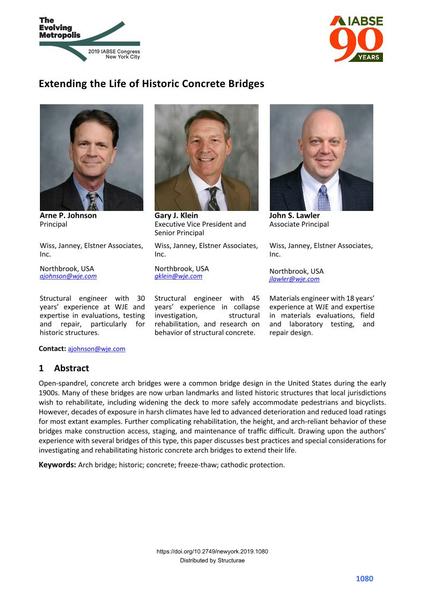Extending the Life of Historic Concrete Bridges

|
|
|||||||||||
Bibliographic Details
| Author(s): |
Arne P. Johnson
(Wiss, Janney, Elstner Associates, Inc.)
Gary J. Klein (Wiss, Janney, Elstner Associates, Inc.) John S. Lawler (Wiss, Janney, Elstner Associates, Inc.) |
||||
|---|---|---|---|---|---|
| Medium: | conference paper | ||||
| Language(s): | English | ||||
| Conference: | IABSE Congress: The Evolving Metropolis, New York, NY, USA, 4-6 September 2019 | ||||
| Published in: | The Evolving Metropolis | ||||
|
|||||
| Page(s): | 1080-1087 | ||||
| Total no. of pages: | 8 | ||||
| DOI: | 10.2749/newyork.2019.1080 | ||||
| Abstract: |
Open-spandrel, concrete arch bridges were a common bridge design in the United States during the early 1900s. Many of these bridges are now urban landmarks and listed historic structures that local jurisdictions wish to rehabilitate, including widening the deck to more safely accommodate pedestrians and bicyclists. However, decades of exposure in harsh climates have led to advanced deterioration and reduced load ratings for most extant examples. Further complicating rehabilitation, the height, and arch-reliant behavior of these bridges make construction access, staging, and maintenance of traffic difficult. Drawing upon the authors’ experience with several bridges of this type, this paper discusses best practices and special considerations for investigating and rehabilitating historic concrete arch bridges to extend their life. |
||||
| Keywords: |
concrete arch bridge freeze-thaw cathodic protection historic
|
||||
